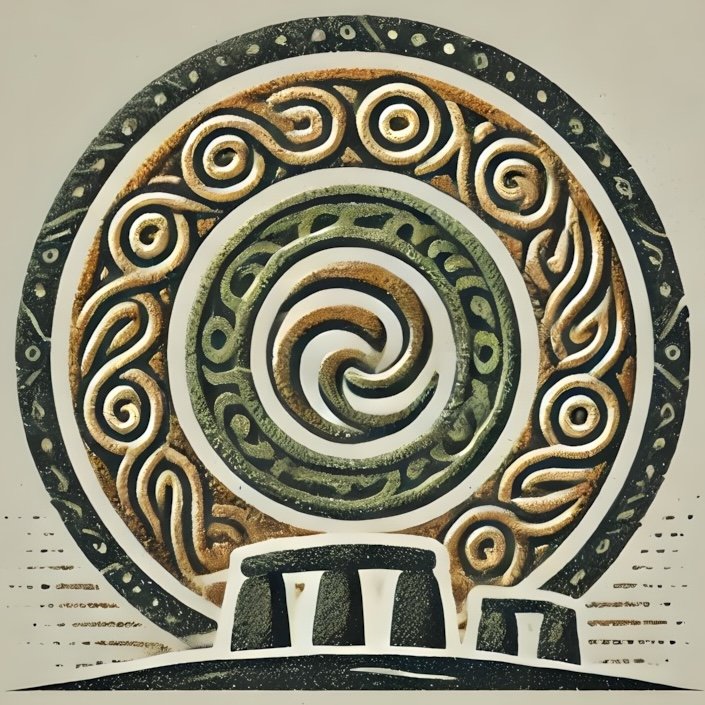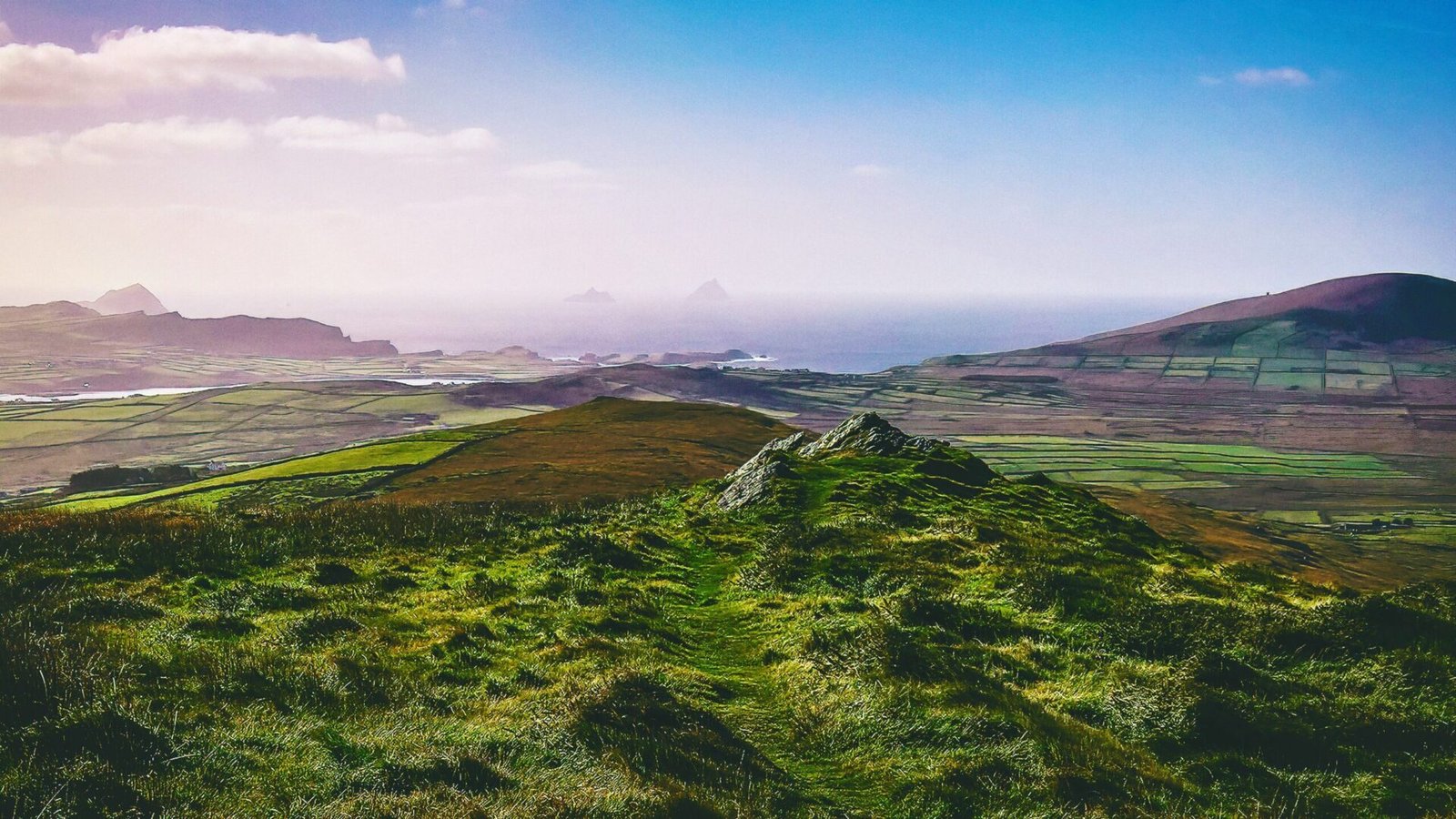The Dagda: An Overview
In the rich tapestry of Irish mythology, few figures stand out as prominently as the Dagda. Often referred to as the Good God or The Great God, the Dagda embodies the duality of life, representing both creation and destruction, nourishment and warfare. His story is interwoven with the fabric of Ireland’s ancient past, linking the mystical realms of the Tuatha Dé Danann to the physical landscape that we can explore today. This pillar page delves into the essence of the Dagda, his attributes, his significance within the Tuatha Dé Danann, and how his legacy resonates through the ages.
Who is the Dagda?
The Dagda is one of the most important deities in Irish mythology, particularly within the pantheon of the Tuatha Dé Danann, the mythological race of gods and heroes who are said to have inhabited Ireland before the arrival of the Celts. He is often depicted as a large, robust figure with a hearty appetite for food, drink, and life itself. His character embodies the archetype of the benevolent father figure, a protector and provider for his people.
In various texts, including the Lebor Gabála Érenn (The Book of Invasions) and the Táin Bó Cúailnge (The Cattle Raid of Cooley), the Dagda is portrayed as a multifaceted deity who possesses immense power and wisdom. He is not only a god of fertility and agriculture but also a master of magic and a warrior. His narratives often reflect the complexities of human experience, making him a relatable figure in the mythological canon.
Description and Attributes
The Dagda is characterized by several distinctive attributes that highlight his multifarious nature. He is often depicted with a massive club or staff, which he wields with great strength. This club is said to have the ability to kill enemies with one end and revive the dead with the other, symbolizing his role as a god of life and death.
Another significant attribute of the Dagda is his magical cauldron, known as the Cauldron of Plenty. This cauldron is a source of endless nourishment, providing food and sustenance to all who seek it. It represents abundance and the nurturing aspect of the Dagda’s character, emphasizing his role as a provider for the Tuatha Dé Danann.
Perhaps most famously, the Dagda is associated with a harp, often referred to as the Harp of the Dagda. This instrument is not merely a musical tool; it possesses magical qualities that can influence emotions and alter the course of events. The Dagda’s harp can summon the seasons, bringing forth spring or winter at his command, making it a powerful symbol of his control over nature and the cycles of life.
The Dagda’s Significance in the Tuatha Dé Danann
The Dagda holds a central position within the Tuatha Dé Danann, serving as a leader and a unifying figure among the gods. His wisdom and strength make him a pivotal character in many of the mythological tales that define this ancient race. He is often depicted as a father figure to other deities, guiding them in their quests and battles.
One of the most notable stories involving the Dagda is his role in the Second Battle of Mag Tuired, a significant conflict between the Tuatha Dé Danann and the Fomorians, a race of monstrous beings. In this epic narrative, the Dagda’s leadership and strategic prowess are crucial in securing victory for his people. His ability to wield both magic and might illustrates the balance of power and wisdom, a theme that resonates throughout Irish mythology.
Moreover, the Dagda’s relationships with other deities, such as Brigid and Lugh, highlight his importance in the pantheon. Brigid, the goddess of poetry, healing, and fertility, is often seen as his daughter, while Lugh, the god of craftsmanship and skill, is portrayed as a warrior who embodies the Dagda’s ideals. These connections reinforce the Dagda’s role as a nurturing figure, fostering creativity and strength within the Tuatha Dé Danann.
The Dagda and the Landscape of Ireland
The Dagda’s legacy is not confined to the pages of ancient texts; it is deeply embedded in the Irish landscape itself. Numerous sites across Ireland are associated with the Dagda, allowing visitors to connect with the mythology in a tangible way. One such site is the Hill of Uisneach, considered a sacred place and a meeting point of the four provinces of Ireland. It is believed that the Dagda performed rituals here, marking the site as a center of power and connection to the divine.
Another significant location is the Brú na Bóinne, a UNESCO World Heritage Site that includes the famous passage tombs of Newgrange and Knowth. These ancient structures are thought to have been built during the Neolithic period, but they are also linked to the mythology of the Tuatha Dé Danann. The Dagda’s association with fertility and the cycles of nature resonates with the agricultural significance of these sites, making them a focal point for those interested in exploring the connections between mythology and the landscape.
The Dagda’s Influence on Irish Culture
The Dagda’s influence extends beyond mythology into the realms of literature, art, and modern culture. His character has inspired countless interpretations, from traditional Irish storytelling to contemporary literature and art. The themes of abundance, protection, and the balance of life and death resonate with audiences, making the Dagda a timeless figure.
In modern interpretations, the Dagda is often depicted in various forms of media, including film, television, and literature, where his character is reimagined to fit contemporary narratives. This ongoing fascination with the Dagda reflects the enduring power of Irish mythology and its ability to adapt to changing cultural landscapes.
Conclusion
The Dagda stands as a monumental figure in Irish mythology, embodying the complexities of life, nature, and the human experience. His attributes, significance within the Tuatha Dé Danann, and connections to the Irish landscape create a rich tapestry of stories and meanings that continue to resonate today. Whether through exploring ancient sites or engaging with modern interpretations, the legacy of the Dagda invites us to reflect on our own connections to the past and the enduring power of myth.
Meta – Learn about The Dagda, a central figure in Irish mythology, his powerful harp, and connections to heroic cycles in Ireland’s rich prehistory.

